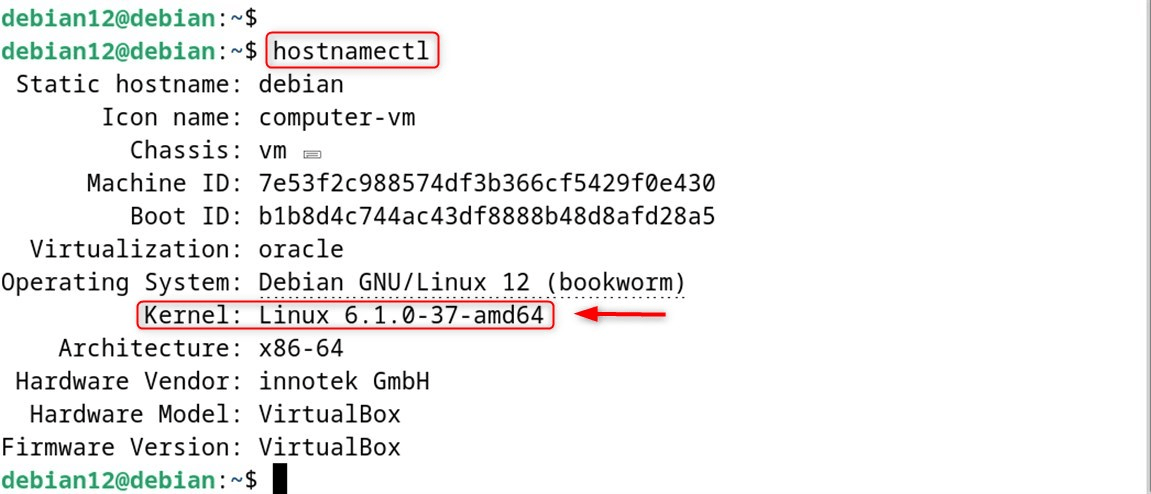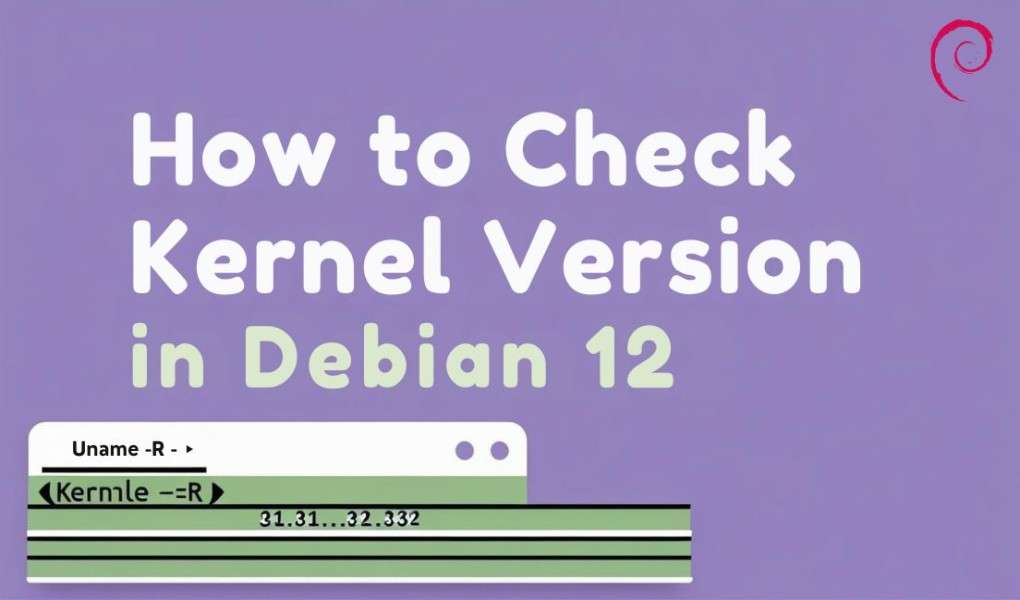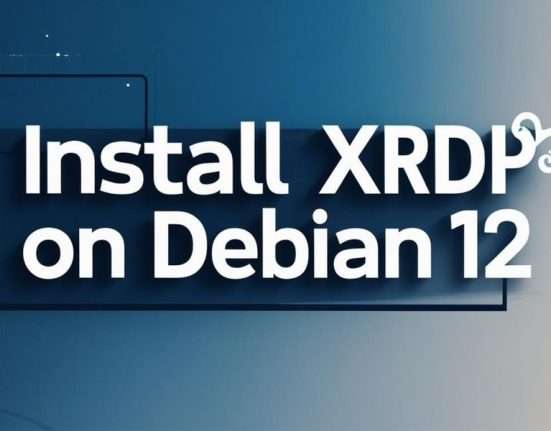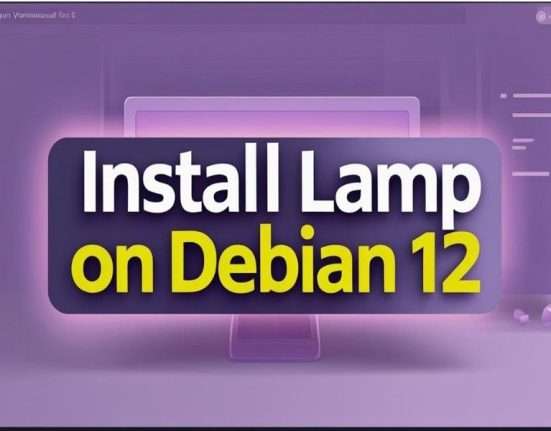If you are running Debian 12 and need to know the kernel version powering your system, you are in the right place. The Linux kernel is the core of your operating system; it handles hardware, manages resources, and enables system-level tasks. Knowing your kernel version is essential for troubleshooting, hardware compatibility, and system updates.
This article will demonstrate eight different methods to quickly check the kernel version on your Debian 12 system.
Table of Contents
- 8 Quick Methods to Check the Kernel Version in Debian 12
- Method 1: Using the uname Command (Recommended)
- Method 2: Checking /proc/version File
- Method 3: Using hostnamectl Command
- Method 4: Examining /proc/sys/kernel/osrelease
- Method 5: Using the dmesg Command
- Method 6: Checking with lsb_release (System Information)
- Method 7: Using /boot Directory
- Method 8: GUI Method (Desktop Environment)
- Bonus Tip: Check Installed Kernel Packages
- Conclusion
8 Quick Methods to Check the Kernel Version in Debian 12
Knowing your kernel version is crucial for system administration, troubleshooting, and ensuring compatibility with software and hardware. Whether you’re a system administrator managing Debian 12 servers or a developer working on kernel-specific applications, understanding how to check your kernel version is an essential skill.
Let’s explore multiple ways to check the kernel version in Debian 12:
Method 1: Using the uname Command
The uname command is the fastest way to obtain the kernel’s name as well as its number from the operating system.
Basic Kernel Version Check
Running this command simply displays you the kernel release version currently in use.
uname -r

Detailed Kernel Information
For a fuller picture-including system architecture and kernel build date-try:
uname -a

This command hands you a single line of information containing:
- Kernel name
- Hostname
- Kernel release
- Kernel version
- Machine hardware name
- Processor type
- Hardware platform
- Operating system
Individual uname Options
If users need more information about the system, here, each option can be used:
uname -s # Kernel name
uname -n # Network node hostname
uname -r # Kernel release
uname -v # Kernel version
uname -m # Machine hardware name
uname -p # Processor type
uname -i # Hardware platform
uname -o # Operating system
Method 2: Checking /proc/version File
Another way to get kernel version details is to look at the virtual file system in /proc.
cat /proc/version

This command pulls in similar information, plus notes about the compiler used and when the build was done.
- Compiler version used to build the kernel
- Build date
- Kernel configuration options
Method 3: Using hostnamectl Command
On systems running systemd, the hostnamectl command bundles kernel version info along with other hardware details.
hostnamectl

Running it gives you a neat summary that includes the kernel release, besides CPU type, memory size, and more.
Extracting Only Kernel Information
To get just the kernel information, use this pipeline:
hostnamectl | grep -i kernel

Method 4: Examining /proc/sys/kernel/osrelease
This special file holds only the kernel release string:
cat /proc/sys/kernel/osrelease

Its compact output makes it a neat choice in scripts where only the version matters.
Method 5: Using the dmesg Command
The dmesg command reads kernel ring buffer messages logged during boot, including the version.
sudo dmesg | grep -i "linux version"

Depending on system security, you might need to run it with sudo.
Alternative dmesg Usage
You can also use dmesg with pipeline as below:
dmesg | head -1

This usually displays the kernel version first since it appears at the top of the boot log.
Method 6: Checking with lsb_release (System Information)
While lsb_release mostly shows distribution details, it may still be handy. Running these together gives you both the Debian release and the kernel version side by side.
lsb_release -a && uname -r

This provides both distribution and kernel version information.
Method 7: Using /boot Directory
The /boot directory stores kernel files that usually have the version number right in their name. You can list them with this command:
ls /boot/vmlinuz-*

If you run that, you might see something like this in return. To get a bit more detail on all the installed kernels, try:
ls -la /boot/ | grep vmlinuz

Method 8: GUI Method (Desktop Environment)
If you prefer clicking over typing, nearly every desktop environment shows the kernel version in its settings.
GNOME Desktop
- Open Settings
- Navigate to About
- Look for system information, including kernel version
KDE Plasma
- Open System Settings
- Go to System Information
- Find the kernel version in the system details
Using System Monitor
Almost all desktop setups contain a system monitor or a task manager. There, the kernel shows up:
- Open System Monitor or Task Manager
- Look for the system information tab
- Find kernel version details
Bonus Tip: Check Installed Kernel Packages
Another handy way to see every kernel you have on the machine is with this command:
dpkg --list | grep linux-image

Running that lets you confirm whether you are booted into the most recent kernel you installed.
Scripting and Automation
If you automate tasks or monitor systems, here are a few quick one-liners you can drop into a script:
Extract Major Version Only
uname -r | cut -d. -f1

Extract Full Version Without Architecture
uname -r | cut -d- -f1

Store Version in Variable
KERNEL_VERSION=$(uname -r)
echo "Current kernel version: $KERNEL_VERSION"

Check if the Kernel is 64-bit
uname -m | grep -q x86_64 && echo "64-bit kernel" || echo "32-bit kernel"

Troubleshooting Common Issues
Permission Denied Errors
Some commands might require elevated privileges:
sudo dmesg | grep -i "linux version"

Missing Commands
If you get command-not-found errors, install the missing packages with:
sudo apt install util-linux procps

Best Practices
- Use uname -r for quick checks-it’s the fastest and most reliable method.
- Use uname -a for comprehensive information-when you need detailed system info.
- Check /proc/version for build details-useful for debugging and compatibility checks.
- Combine methods for scripts-use multiple commands to ensure reliability.
- Finally, document kernel versions-keep records for ongoing system administration.
Conclusion
Checking the kernel version in Debian 12 is a core task for system administrators, and several methods let you do it. Command-line tools such as uname and hostnamectl, system files like /proc/version, and even graphical screens each offer something useful. The uname -r command is still the fastest and most universally available, while reading /proc/version gives the deepest insight. When writing scripts, mixing these commands adds confidence that the report is correct every time.
Checking the kernel version helps you spot security fixes, confirm that software will run, and narrow down problems when they appear. With these simple tools, you can keep your Debian 12 servers working smoothly and safely.








Leave feedback about this